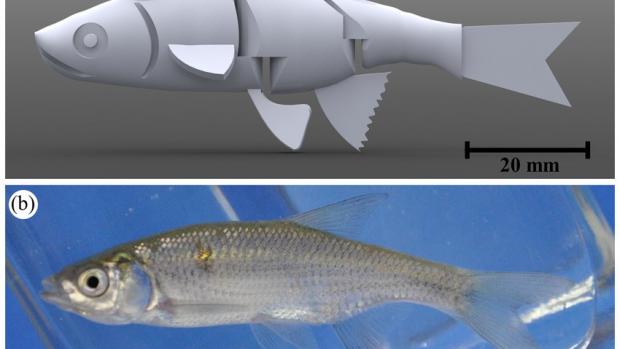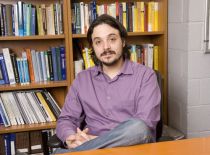National Science Foundation Tells Students to Pack Their Bags and Go
So a Group of Tandon’s Aspiring Engineers Is Heading to Korea

Officials at the National Science Foundation (NSF) believe that a diverse, globally engaged U.S. science and engineering workforce is crucial to addressing critical real-world problems. To that end, the organization has established a program called Partnerships for International Research and Education (PIRE), whose goal is to support high quality projects that require international collaboration.

Professor Mauizio Porfiri
Professor of Mechanical Engineering Maurizio Porfiri was recently awarded a $610,000 PIRE grant that will allow him to send teams of students to the Korea Advanced Institute of Science and Technology (KAIST) each year for the next five years, to participate in a project involving Soft Robotics, which refers to the use of malleable materials in robotic systems. (These materials are becoming increasingly important for engineers working on systems that deal with dynamic tasks like grasping and manipulating unknown objects or moving through rough terrain.)
This year, Porfiri will send two undergraduates and one doctoral candidate, whose selection is ongoing, to work with his collaborator, Il-Kwon Oh, at KAIST. (They will also spend a short time in Japan.) The University of Nevada, University of Utah, and Rensselaer Polytechnic Institute will also be sending students to participate in this 8-week multidisciplinary project. Porfiri’s students will be focused on computational mechanics and modeling, while others will explore such topics as polymer chemistry and control systems. Their ultimate goal is to develop advanced multifunctional artificial muscles based on the unique properties of Ionic Polymer-Metal Composites (IPMCs)—innovative electro-active materials that deform when a low electric field is applied. Porfiri and his group have played a central role over the last eight years in modeling and predicting the response of these emerging materials under NSF support.
“Our research could lead to great advances in biomimetic soft robotics, medical diagnostics and tools, and surgical systems,” Porfiri says. “There is a pressing need for cost-effective and easily scalable IPMC-based artificial muscles, and I’m happy that students from the NYU Tandon School of Engineering will have a chance to do such important work, thanks to the NSF.”
Paving the Road to Korea

Paul Phamduy, Doctoral Student
Last year Porfiri sent a doctoral student, Paul Phamduy, to work at KAIST for two months, thanks to a different NSF program, this one called the East Asia and Pacific Summer Institutes (EAPSI) for U.S. Graduate Students.
While Phamduy worked on the design of a fully flexible robotic fish powered by a graphene super capacitor, some of his most memorable experiences did not take place in the lab. “Over the course of the summer I was immersed in Korean culture,” he explains. “I tried many new foods, saw important historical sites, learned to decipher a few Korean characters, and say some rudimentary phrases. I made new friends from every discipline, since EAPSI attracts students from the social sciences as well as engineering, and I forged professional connections I hope to draw upon in the future. All in all, it was the experience of a lifetime, both academically and culturally.”
Asked if he had any advice for the trio of mechanical engineering students who will soon be following in his footsteps, he asserted, “It goes without saying that they should make the most of every moment. I wish I had made the time to explore more of KAIST; there were labs I would like to have visited and professors I would like to have met. That’s the only thing I would change about my entire experience.”




